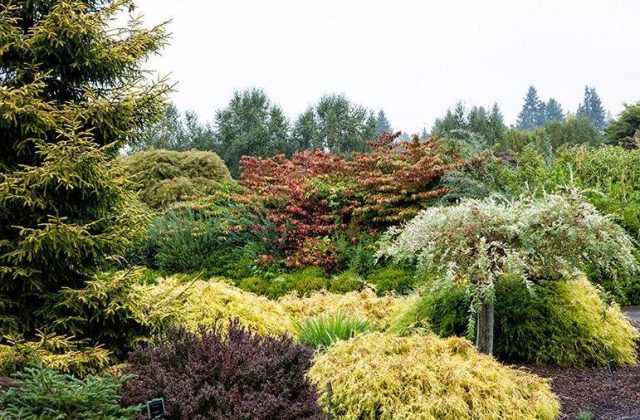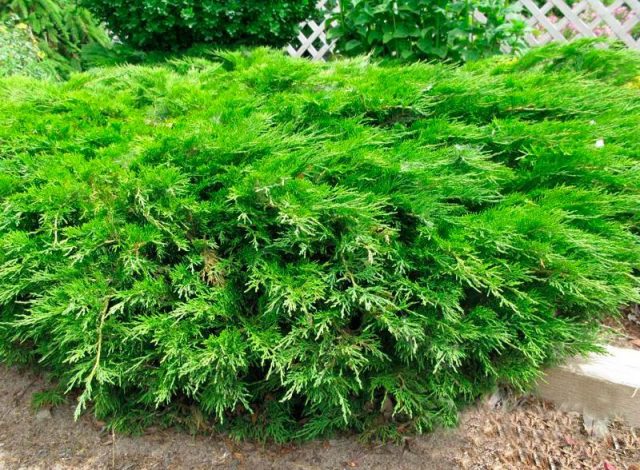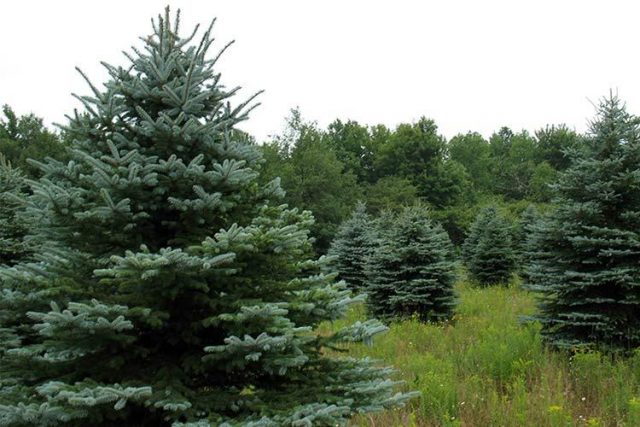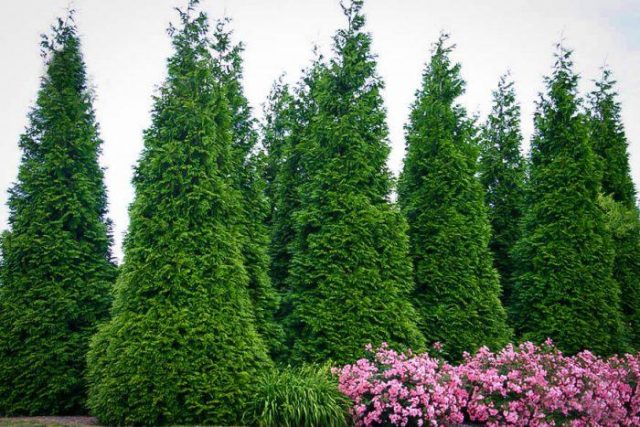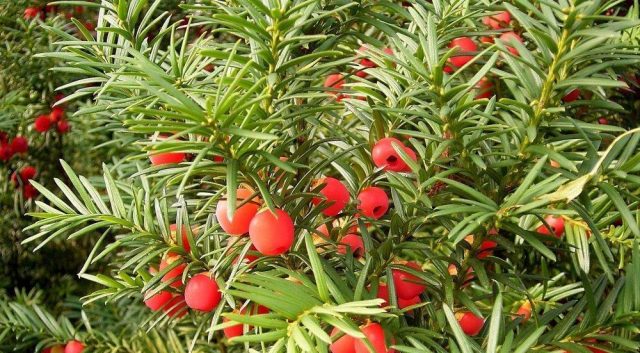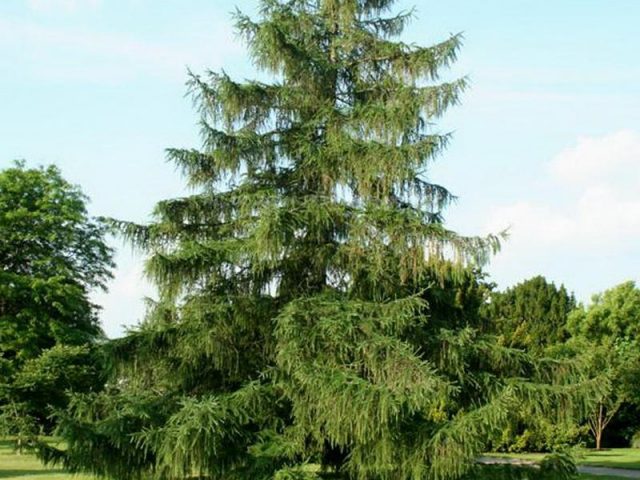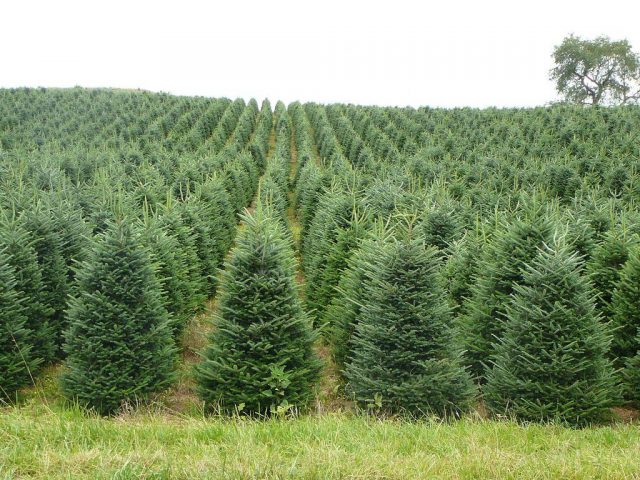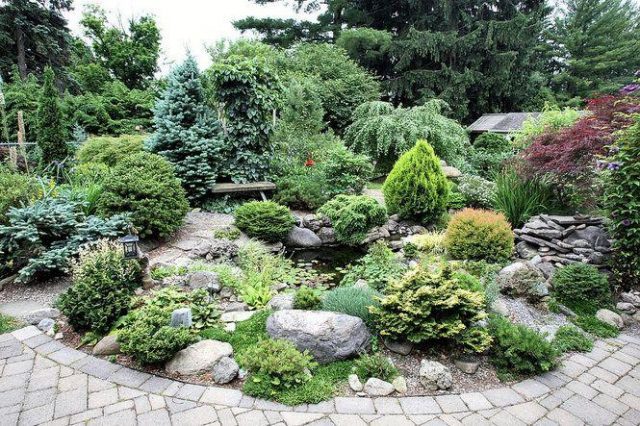Content
Every year more and more people are starting to use conifers in landscape design for decorating gardens and summer cottages. The craze for arranging lawns and lawns influences the popularization of landscape species and varieties of conifers among plant breeders.
The article presents the main rules for composing compositions from conifers in landscape design, as well as photos and distinctive features of each conifer.
Features of conifers in landscape design
The main advantage of garden compositions with conifers in design is considered to be the unique decorative properties of these plants: evergreen shrubs and trees look great both on their own and in combination with other ornamental crops.
In addition, plants have a lot of useful properties:
- actively absorb dust particles;
- delay windy gusts;
- soften the microclimate around the house and the landing area;
- stop the reproduction of viruses, bacteria and harmful insects;
- absorb noise;
- enrich the air with oxygen and phytoncides.
In a city environment, representatives of conifers will become good helpers in the fight against smog and exhaust gases.
Exquisite appearance, a wide variety of shapes, colors and sizes of conifers help to create unique landscape compositions for both large and medium-sized plots. There are several options for placing conifers in landscape design:
- as hedges;
- in the form of sculptural compositions;
- along the paths;
- in the central part of the site.
Types of design of conifers in the country
In the field of landscape design, there are a huge number of varieties and types of conifers for decorating the territory. When drawing up a scheme for a future composition, it is very important to take into account the characteristics of each plant variety: size in adulthood, color of needles, crown shape, and growth rate.
Coniferous hedge.
In addition to decorative properties, such a landscape composition in design has its own functionality: dense and thorny branches of the hedge are able to protect the site from the eyes of the surrounding people, as well as from uninvited guests. Conifers occupy a special place in the creation of a “living fence”: such an artificially created coniferous fence, which remains green throughout the year, is perfectly combined in design with both a summer lawn and a white cover of snow in winter. The hedge complements well the design of the site both around a small country house and around a huge mansion.
The use of pointed coniferous crops (spruce, pine, fir) will significantly enhance the protective properties of the landscape hedge, and will also provide active air ionization due to the release of phytoncides into the environment.
Preparation of material for planting
The most popular option for landscape conifers is propagation by cuttings. It is often carried out in a greenhouse or greenhouse environment.
Lignified cuttings must be planted in early spring, when the buds swell. For reproduction of juniper, thuja and spruce, green cuttings are used, the rooting of which is several times slower. Cuttings in greenhouses are carried out in autumn and winter, and the average duration of rooting for most conifers is 70 - 80 days.
Features of planting a coniferous hedge in landscape design.
For planting a living fence in landscape design, take into account:
- Correct selection of the landing site. It is important to remember: among the breeds of conifers there are both light-loving and shade-tolerant representatives. However, gardeners recommend planting cuttings in lighted areas with easy access to shade. This plays an important role for young plants, the needles of which tend to burn under the influence of the active sun. In order for the needles of the tree to retain their bright color, from time to time it needs to be shaded with the help of protective screens.
- For the southern regions, the most optimal period for planting is autumn, and for the northern regions, spring. Plants with a closed root system are allowed to be planted throughout the growing season.
Top dressing of hedges
Conifers grow well and thrive on non-saline soil. At the same time, each landscape ephedra has its own preferences regarding the soil:
- for pines, sandy soil will be the best option;
- for spruce - clay;
- for yew - leafy, rich in humus;
- for thujas and junipers - slightly acidic.
Ephedra react positively to feeding with sawdust, wood chips, compost and mineral fertilizers (except for manure!). From mid-March to August, it is necessary to introduce nitrogen phosphate (25 - 30 mg / m²) into the soil every 2 - 3 weeks. If the landscape hedge has a thick mulch layer of bark, the dosage can be increased. Top dressing in the form of tablets and special granules with a long-lasting effect should be applied once a year, in the spring. Special salt is also added to the soil to prevent discoloration of the needles.
At the end of summer, feeding on coniferous hedges should be stopped so that the plants can prepare for the winter period.
Watering a coniferous hedge
Watering coniferous hedges is necessary throughout the growing season. However, in the fall, watering should be kept to a minimum, so as not to stimulate the active growth of shoots.
Water the hedge regularly (1 - 2 times a week).
Cypress trees, thuja, yew and spruce need humid air, therefore, in the hot summer period, it is necessary to regularly spray the crown of the plants. This will help maintain an optimal moisture level, as well as remove any dust accumulated on the crown.
Do not irrigate the soil in hot weather, as this can lead to numerous burns, and also in the evening - because of the increased risk of fungal diseases in the landscape composition.
Pine and juniper easily tolerate periodic drying of the soil, however, drying out of the soil can threaten young conifers with death.
Hedge trimming
Trim landscape hedges in the spring (April and May) or fall (September and October). Thuja, cypress and yew trees adapt best to a haircut.
A special haircut (each year, 1/3 of the annual growth is cut off the sides and top of the hedge) helps to make the spruce hedge more voluminous, which significantly improves the appearance of this design. Spruce hedges should be formed on a regular basis, since cutting wood older than three years can have a bad effect on its condition.
For pine trees, shortening of the upper shoots is necessary, which promotes active growth of the lateral branches. It should be carried out from May to June, after the appearance of a young growth.
When shaping, do not cut the ends of pine branches with scissors. When the needles begin to separate on young shoots, they need to be clamped with your thumb and forefinger and twisted. After that, new buds begin to awaken, and the ends of the branches become thicker and more voluminous.
For other types of conifers, plucking can be carried out only in the spring, and for junipers throughout the year.
Coniferous beds
In addition to being evergreen throughout the year, the club conifer has many advantages for landscaping applications:
- easy and simple maintenance;
- the ability to preserve coniferous plantings for many years;
- perennial plants do not need annual renewal;
- the creation and maintenance of such a flower bed requires much lower costs;
- keeping the flower bed in proper condition does not take much time.
Features of coniferous beds:
- Low-growing and compact plants are often used for a landscape coniferous flower bed, and the play of contrast of color and shape serves as the basis for its creation.
- A lawn or alpine slides acts as a basis for decorating a coniferous flower bed.
- For additional decoration of flower beds, stones and bark are used;
- The most popular club plants are conifers such as pine, spruce, fir and juniper.
Shrubs (rhododendrons, barberry, common heather, boxwood) and perennial herbaceous plants (cereals, ferns) are well combined with conifers in the design. To create the background of a landscape flower bed, ground cover plants are used: phlox, thyme, creeping tenacious or sedum.
For huge spaces, a large flower bed (photo below) would be a good idea, where conifers such as juniper, western thuja and mountain pine are planted along the fence.
Rockery from conifers (briefly)
Rockery from conifers is one of the varieties of flower beds in a stone environment, which perfectly complements the landscape design in the country. It can be created both on flat terrain and on a slope.
An ideal place for arranging a rockery will be a lighted space in the southwestern part. Such a landscape composition of conifers will perfectly complement the design along the house, near the pond or in the central part of the garden.
When decorating garden rockeries, designers adhere to the following landscape principles:
- In design, it is better to avoid strict symmetry and order in the arrangement of elements.
- You should choose natural shapes and smooth outlines.
- Try to stick to a discreet color scheme.
- Correctly combine stones and conifers.
- Ensure that the visual integrity of the landscape composition is maintained both at close and at a distance.
When creating a rockery design, it is customary to plant undersized conifers near large stones: Canadian spruce, thuja Smaragd, mountain pine, Cossack juniper or berry yew. The empty space between the stones should be filled with creeping conifers (horizontal or scaly juniper, microbiota, Canadian hemlock) and decorated with flowering plant species (stonecrop, stonecrop, etc.).
Conifer border
Miniature varieties of conifers allow you to create another type of landscape composition for the design of a summer cottage - a coniferous border along the path. For its decoration, creeping varieties of conifers are used, complementing the composition with stones, gravel and flowering plants.
Using undersized coniferous shrubs and trees in the design of the territory, landscape planners get beautiful impassable fences that outwardly resemble a monolithic wall.
Plants are staggered, planting in 2 - 3 rows. Planting a coniferous curb can take a lot of time and effort, but the results are well worth the resources.
For landscape zoning of garden areas, medium-sized (1 - 2 m in height) varieties are often used so that they do not obscure the general view.In addition, the coniferous border can serve as a good background for planting bright flowering perennials: this design technique is used to decorate gardens in a landscape or modern style.
Plants compatible with conifers
Conifers tend to acidify the soil, which can significantly complicate the development of horticultural crops growing in it.
They feel best near conifers: hydrangea, calla, fern, daylily, miscanthus, lilac, forsythia, anaphalis. Among the large trees, oak and birch are most comfortably adjacent to pine.
Heathers and eriks also go well with them: both types of plants prefer the same soil in composition and level of acidity. Of the shrubs, gooseberries get along best with conifers. 7
Conifers compatibility with viburnum
Viburnum bushes are actively used by designers in landscape compositions. Bright branchy bushes of the plant perfectly complement the design of the garden area in winter, and are also not picky about the planting site (viburnum grows well both in the light and in a shaded space). However, the proximity to some conifers is bad for the development of the plant. The viburnum feels especially uncomfortable next to the spruce: because of such a neighborhood, the bush can hurt, and soon die altogether. Of all the conifers, the thuja western viburnum is best combined with the viburnum: the tree does not create obstacles to the development of the root system of the shrub.
Landscape designers often combine roses with vertical conifers (emerald, brabant and spherical thuja). It is only important not to allow the growth of thuja in breadth, since then the ephedra covers the rose bushes. Roses also go well in design with juniper varieties such as Blue Arrow, Moonglow and SkyRocket.
How to make compositions from conifers
Due to their unique decorative properties, conifers can perfectly complement the landscape design of both a huge garden space and a small plot.
However, in order to properly plan such a landscape composition on the territory, it is important to consider several nuances: its location in the design, appearance, shape and all its constituent elements. After that, it is necessary to select the appropriate plants, taking into account the characteristics of the selected composition.
The design of the front garden and the facade of the house is always striking in the first place: that is why landscape designers recommend decorating these areas somewhat solemnly and elegantly. For such cases, the design can use landscaping with elements of a regular style, including the symmetrical arrangement of all the constituent elements or repetition of the rhythm. This type of decoration involves the use of a rich vegetable assortment.
The main role in such a composition is taken by a pyramidal or standard coniferous tree, reaching a height of 2.5 - 3 m in adulthood.On both sides of it, landscape conifers of the second order (subaccent) with sizes up to 1.5 m are planted symmetrically. when an empty space remains, dwarf and widespread species of conifers, compact deciduous shrubs or ground cover plant varieties can be placed between them.
If an informal planting style is used to create a landscape composition in the design, experts advise placing the elements on the lawn in the form of an island flower bed. From them, you can form mixborders (complex design landscape compositions of flowers and shrubs) along the contour of the site, and, combining them with decorative deciduous varieties, create zoning of the garden space. In this case, it is best to select plants according to the "irregular versatile triangle" scheme. The rest of the site is usually filled with additional elements, as the level of their importance for the appearance of the landscape composition decreases.
Low-growing species should be planted in the foreground, and higher and more voluminous ones closer to the center. In order for the landscape flower bed to look bright and rich, it is necessary to choose plants with different colors of the needles.
If the needles of the central plant are silvery, a contrasting shade should be placed next to it. It is also worth remembering about lighting and adding seasonal vegetation to the design of the flower bed: bright colors against the background of green conifers will make the appearance of the composition unforgettable.
For landscape decoration of alpine slides or flower beds with annual and ground cover representatives, it is best to use miniature types of conifers with spherical and cushion-shaped growth forms. Such a landscape design can fit well with ground cover varieties that are lined on the ground in the form of a carpet or hang down from retaining walls.
To create a beautiful harmonious landscape composition with conifers, you need to remember the following important points:
- Shape geometry... Professional landscape composition is based on the principle of color and shape contrast. By combining contrasting colors and shapes, a variety of visual effects can be obtained that will greatly enhance the appearance of a design. Plants in the form of a pyramid are well combined with globular conifers, and tall species harmoniously complement undersized ones; large trees will be more visible against the background of miniature elements, and the transitions between the size and shape of the crown will help smooth out the lines of the exterior.
- Principles of symmetry and asymmetry in design... Decorating a space with conifers involves a combination of incompatible things. To decorate the site, you can use both symmetrical compositions and absolutely asymmetric elements: they will also look harmonious and give great uniqueness to the overall picture.
- Color combinations... There are a huge number of species and varieties of conifers, differing in color. However, it is worth remembering: too rich gamut of colors can "break" the landscape composition. Designers recommend using no more than two shades in a group of three conifers and no more than three flowers in a group of five or more plants. In significant coniferous groups (more than 30 seedlings), it is allowed to use plants with a rich color range, combining them into small subgroups: three elements of the same color.
- Crown height and shape... When creating a composition, it is important to pay attention not only to the color of the seedling, but also to the size of the tree in adulthood. To understand how the finished landscape composition will look in design, you need to familiarize yourself with all the main features of the selected varieties of conifers.
You can find out more information about the features of using ephedra in landscape design and composing compositions from them in the video:
Tips for choosing conifers for site decoration
There are a huge number of species and varieties of conifers, some of which are best suited for landscaping large and small gardens.
- Juniper... This type of conifers will be a good option for decorating the garden with an average level of altitude. Cossack, horizontal and ordinary juniper varieties are most widespread in Russia. Juniper Cossack reaches up to 1 m in height in adulthood and grows rapidly over the entire surface. The horizontal variety has similar characteristics, the difference is the elongated branches with the needles of a gray-gray color, which in winter becomes brown. The common juniper is an evergreen shrub that grows up to three meters in height, which is often cultivated by gardeners as a tree.
- Spruce... Landscape designers use it as one of the most traditional landscaping plants.Spruce has many varieties, each of which has its own unique color: from silver-mint to rich emerald green, with a purple or lilac tint. Most often, ephedra is used for planting along the perimeter of the territory in large areas.
- Thuja... Thuja is a short tree, reaching from 1.5 to 2.5 m in height at maturity. This type of conifers is most often used by landscape designers to create hedges, and a little less often in landscape compositions. The decorative features of thuja in garden design lie in its soft bright green leaves and quick adaptation to pruning and shaping. The most popular varieties are emerald Smaragd, compact light green West Danica and light green Brabant.
- Yew... This type of conifers is considered a bit finicky: the plant grows and develops best on black soil in the absence of wind. Despite this, the yew has a great advantage: the shrub thrives even in shaded areas, which allows it to be grown in the northern parts of the site.
- Larch... It is a pine tree that reaches more than 50 m in mature age, which is why it is practically not used for planting in small areas. In the conditions of the Russian climate, the most grown varieties of larch are European (a green plant with a bluish bloom on the needles) and Japanese (with a wide pyramidal crown).
- Fir... One of the most original representatives of conifers. It is believed that the coniferous scent of the tree has a beneficial effect on the respiratory and nervous systems of the body. It has a voluminous dense crown and deep green needles. For normal growth and development, fir needs space, which is why it is better to plant the plant in large areas.
- Dwarf conifers... These include undersized pine, spruce, fir, thuja, as well as certain subgroups of special representatives. The group of miniature conifers also includes Canadian hemlock Jeddeloh, juniper, Eastern and Serbian spruce, mountain pine and Menzis pseudo-lump, Korean fir and dwarf cedar. All of these crops are actively grown in Russia. The height of these plants, depending on the formation, does not exceed 1.5 m.
Ephedra schemes in landscape design
After choosing a planting site for conifers, it is necessary to determine the layout of the landscape composition. It is recommended to apply the design diagram of the future composition on a sheet of paper, taking into account the following nuances:
- It is necessary to take into account the size of the constituent elements: stones and plants.
- Choose the right color palette of stones: designers are advised to opt for yellow, brown and beige shades.
- It is very important to recreate the natural imitation of the natural location of rock ledges on the soil surface. In design, ephedra often also act as an accent background for compositions from other plant species.
When creating a design for a landscape composition, it is also important to pay attention to the distance from the place from which it is best viewed: it should be more than two heights of the whole composition.
Landscape designers consider grassy lawns and lawns to be the best background option for ephedra. The most optimal location for coniferous compositions is considered to be the eastern or western part of the site.
Much also depends on the compatibility of the selected elements with each other. The best visual effect is given by the combination of conifers with roses. It is important to remember that conifers oxidize the soil, which can affect the development of rose bushes. Because of this, such a design of a landscape composition may require large financial costs to maintain the soil in optimal condition.
Conclusion
Every day, more and more people use ephedra when creating landscape design.Conifers are highly valued for their decorative qualities, lend themselves well to pruning and shaping, are famous for their picky soil, ease of maintenance and retain their green appearance throughout the year. When creating the design of landscape compositions with the participation of conifers, it is important to remember the main nuances of the design: the compatibility of plants with each other, the contrast of shape and color, as well as the peculiarities of growing each of the constituent species.







